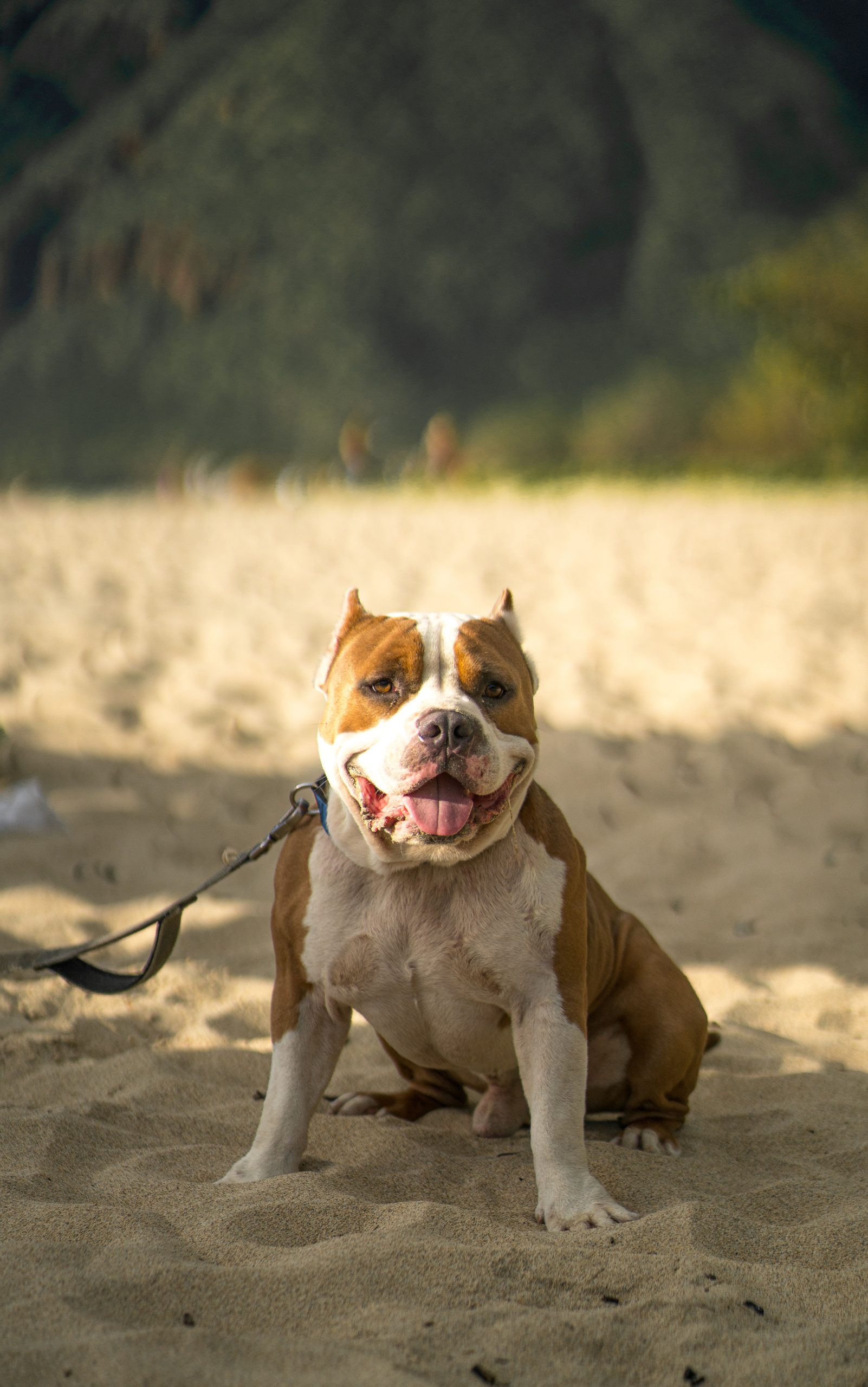The American Staffordshire Terrier, or AmStaff to their admirers, is a canine companion that is intelligent, self-assured, and friendly. Their bravery is legendary. A properly raised, well-adjusted American Staff member is a devoted, reliable friend no matter what. AmStaffs are bull-type terriers that are robust and stocky, measuring 17 to 19 inches at the shoulder. The dark, round eyes are spaced far apart, and the head is broad with a well-defined jawline, cheekbones, and cheeks. AmStaffs move with grace and agility, and their bouncy gait communicates the breed’s innate confidence. The rigid, glossy coat is available in a variety of hues and designs. AmStaffers describe their dogs as being delightful “personality dogs” around the house who are extremely aware of their environment and up for anything. AmStaffs like both physical and mental challenges. As seen by their numerous ventures into show business, they are very trainable. There is only one way to go when purchasing an AmStaff: Do your research and locate an ethical AKC breeder.
American Staffordshire Terrier
Average sizes and life
expectancy of the breed.
Height
18-19 inches (male)
17-18 inches (female)
Weight
55-70 pounds (male)
40-55 pounds (female)
Life Expectancy
12-16 years
Breed Traits & Characteristics
About the Breed

Owning a dog is not just a privilege; it’s a responsibility. They depend on us for, at minimum, food and shelter, and deserve much more. When you take a dog into your life, you need to understand the commitment that dog ownership entails.
 Health
Health
Recommended Health Tests From the National Breed Club:
- Hip Evaluation
- Thyroid Evaluation
- NCL DNA Test
- Cardiac Exam
- Ophthalmologist Evaluation
 Grooming
Grooming
 Exercise
Exercise
 Training
Training
 Nutrition
Nutrition
History
Several dog breeds were developed in Great Britain in the past to thrive in blood sports. They were either expected to engage in combat with one another or were released in groups to face a staked bear or bull, with onlookers placing wagers on the gory outcome. Such abhorrent pursuits have long been forbidden. The pleasant legacy of these tragic spectacles, however, is that many of today’s most popular breeds, such as the Bulldog, Bull Terrier, and American Staffordshire Terrier, originated as fighting and baiting dogs in the 18th and 19th centuries.
Everyone may agree that the Bulldog was the defining characteristic of the bull-type terrier breeds. Arguments start when breed specialists try to identify which preexisting terrier breeds are present in the genetic background of the AmStaff (keep in mind that the Bulldog of 200 years ago was a totally different, more aggressive beast than the loving “sour mugs” of today). Some people think that the genetic admixture that produced the Staffordshire Terrier, the ancestor of the AmStaff, included extinct breeds like the White English Terrier and the Black-and-Tan Terrier.
Whatever the true genetic makeup of the AmStaff may be, we are confident that working-class Brits interested in blood sports crossed terrier instincts for bravery and “gameness” with those of old-style Bulldogs to produce bull-type terrier breeds.
Staffordshire Terriers had reached America by the middle of the 1800s. A larger-than-average Staffordshire Terrier was created by American breeders. The Staffordshire Bull Terrier and the American Staffordshire Terrier were eventually recognized by the AKC as two distinct breeds.
Today’s well-educated AmStaff is a more laid-back individual than his pit-fighting predecessors and has long been a popular figure in America. The breed is frequently seen in popular culture, as evidenced by the fact that Bud, an AmStaff, traveled with America’s first cross-country auto trip in 1903 (which was the subject of the Ken Burns documentary “Horatio’s Drive”), that Petey from the 1930s “Our Gang” film comedies and Tige from the Buster Brown Shoes logo are both AmStaffs, and that Sgt. Stubby, an AmStaff, was the most decorated American war dog



